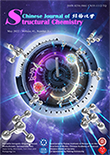
Versatile Inorganic Oligomer-based Photochromic Spiropyrane Gels
Jiajia Song, Wei Duan, Yun Chen* and Xiangyang Liu*
Chang-Pu Wan, Jun-Dong Yi, Rong Cao* and Yuan-Biao Huang*
Chin. J. Struct. Chem. 2022, 41, 2205001-2205014 DOI: 10.14102/j.cnki.0254-5861.2022-0075
May 20, 2022
metal-organic frameworks, covalent organic frameworks, CO2 electroreduction reaction, conductive frameworks
ABSTRACT
Porous crystalline metal-organic frameworks (MOFs) and covalent organic frameworks (COFs) are promising platforms for electrocatalytic reduction of CO2(CO2RR) due to their large CO2 adsorption uptakes and periodically arranged single active sites. However, the applications in CO2RR of the traditional MOFs and COFs are greatly limited by their low electron conductivity. In recent years, numerous types of MOFs and COFs with high intrinsic conductivity have been rationally designed and successfully constructed, and some of them have been applied in CO2RR. In this review, the applications of conductive MOFs and COFs in CO2RR have been summarized. The conductive MOFs and COFs can be categorized according to the methods, in which the conductivity is enhanced, such as constructing fully π-conjugated backbones, donor-acceptor heterojunction, enhancing the π-π stacking interactions between organic moieties and/or the introduction of guest molecules.






